Table of Contents
The Pepper Lunch Recipe is one of Japan’s most beloved fast-food dishes. What makes this meal special is the unique experience of cooking it right at the table. It’s a DIY-style meal, where you are served raw ingredients on a sizzling hot plate, and by the time it reaches your mouth, it’s the perfect blend of crispy rice, tender beef, buttery corn, and flavorful sauces. Whether you’re a long-time fan of Pepper Lunch or just discovering it, this guide will show you how to bring the restaurant experience into your home kitchen, step by step.
What Is a Pepper Lunch Recipe?
The Pepper Lunch Recipe originated from a Japanese fast-food chain, Pepper Lunch, known for its sizzling hot plate meals that allow diners to cook their own food at the table. The chain’s most famous dish, Beef Pepper Rice, is a combination of thinly sliced beef, rice, corn, and black pepper, served with a choice of two sauces: garlic soy (karakuchi) and honey soy (amakuchi). This dish offers a unique dining experience and is customizable to your personal preferences, making it an exciting addition to any meal plan.
The core concept of the Pepper Lunch Recipe revolves around using a very hot skillet (or a cast-iron plate) to cook the thin slices of beef and crisp up the rice. The high heat sears the beef while ensuring the rice at the bottom of the skillet becomes crispy, adding a delightful texture to the meal.
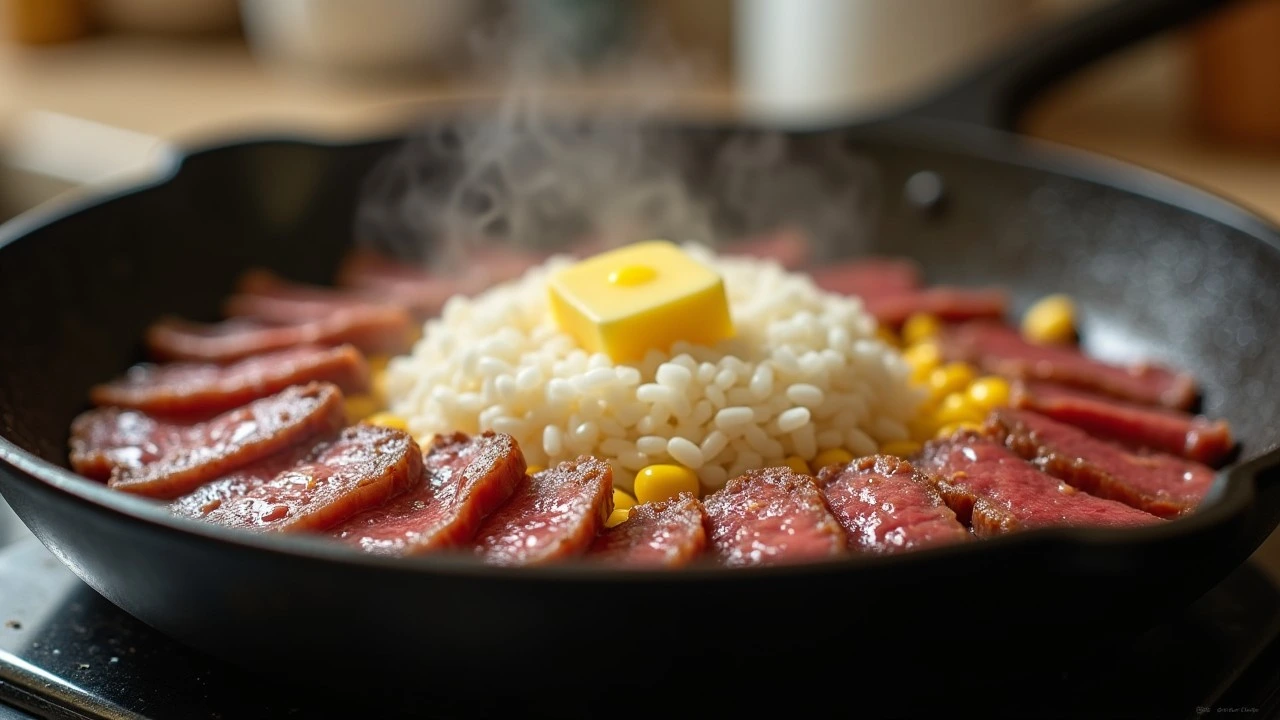
Ingredients for the Pepper Lunch Recipe
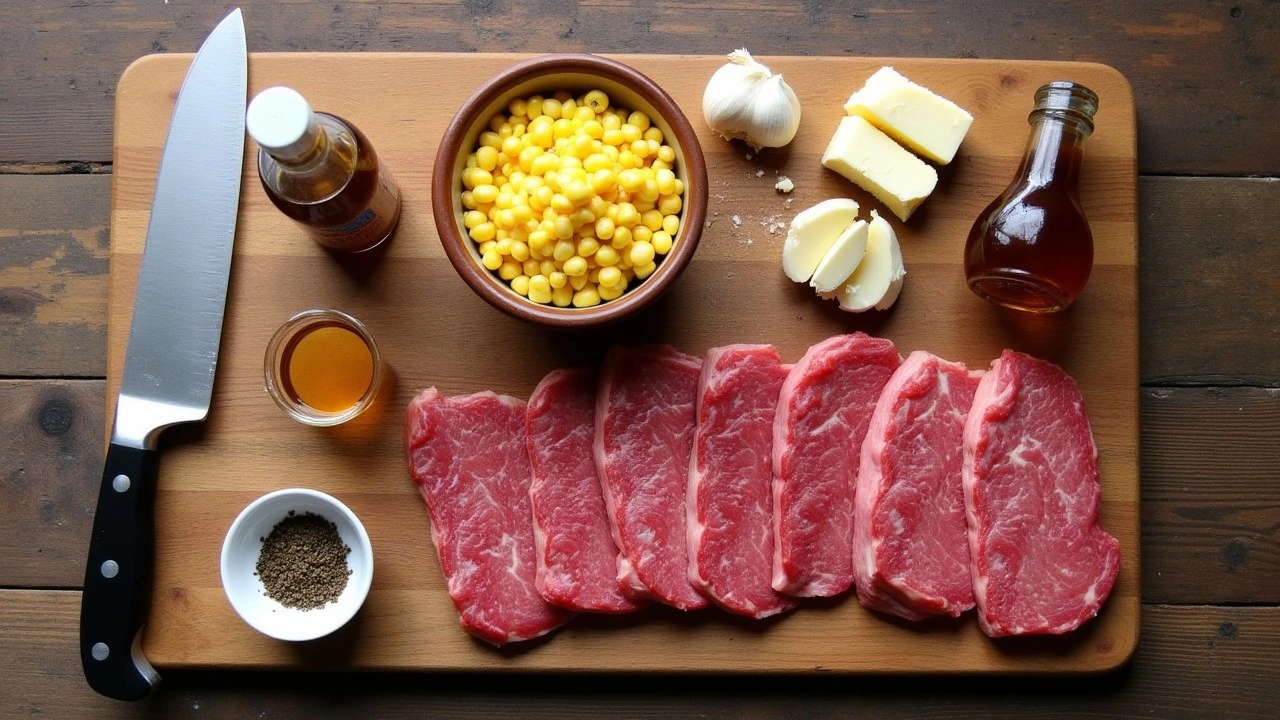
To recreate the authentic pepper lunch recipe at home, you’ll need the following ingredients:
Beef Pepper Rice:
- 400g thinly sliced beef (Ribeye or sirloin is preferred for its tenderness and marbling)
- 3 cups cooked Japanese rice (Short-grain rice, such as Koshihikari, for the perfect texture)
- ¼ cup canned or fresh corn kernels (For sweetness and balance)
- 2 tbsp salted butter (Divided; adds richness and helps with crisping the rice)
- 1 tbsp vegetable oil (For searing the beef)
- ½ tsp freshly ground black pepper (To season and give the dish its signature peppery kick)
- Chopped green onions (For garnish, adds a fresh burst of flavor)
For the Garlic Soy Sauce (Karakuchi):
- ¼ cup soy sauce (A combination of light and dark soy sauce works well)
- 4 garlic cloves, crushed (For a deep, rich garlic flavor)
- ½ cup water
- 1 tsp cornstarch (To thicken the sauce)
- 1 tsp sugar (For a touch of sweetness)
For the Honey Soy Sauce (Amakuchi):
- ¼ cup soy sauce
- ¼ cup honey (For a sweet, sticky glaze)
- 1 tbsp neutral oil (Canola or vegetable oil)
- 2 tbsp chopped onions (Adds texture and mild sweetness)
- 1 tsp garlic, minced
- 1 tsp cornstarch (For thickening)
These sauces are served on the side, allowing diners to mix them with the beef and rice to suit their taste.
How to Cook the Pepper Lunch Recipe
The magic of the pepper lunch recipe lies in the cooking method. Here’s how to replicate the sizzling experience at home in 10 easy steps.
Step 1: Prepare the Beef
Start by thinly slicing the beef, as this is essential for achieving the right texture. Freezing the beef for about 30 minutes before slicing makes it easier to cut thin, uniform slices. If you have a deli slicer, that’s even better! After slicing, marinate the beef with soy sauce, a dash of sesame oil, and freshly ground black pepper. Let it sit for about 15 minutes while you prepare the other components.
Step 2: Cook the Rice
To get that authentic Japanese feel, you’ll want to use short-grain rice, which has a sticky, chewy texture ideal for this dish. Cook the rice in a rice cooker if possible, as it ensures perfect, fluffy results. Alternatively, you can cook the rice on the stovetop by following the 1:1.25 water-to-rice ratio for short-grain rice. Here’s a detailed guide on cooking rice to help you master the process(Purdue University – Extension).
Step 3: Prepare the Sauces
While the rice is cooking, prepare your sauces. Start with the garlic soy sauce (karakuchi). Combine soy sauce, water, garlic, and sugar in a small pot, and heat until it simmers. Mix cornstarch with a bit of water to make a slurry, then add it to the sauce to thicken. Once thickened, remove from heat and set aside to cool.
Next, make the honey soy sauce (amakuchi). Heat the neutral oil in a saucepan, add the onions and garlic, and sauté until fragrant. Add the honey, soy sauce, and a cornstarch slurry, and cook until thickened. Set this sauce aside as well.
Step 4: Heat the Skillet
The success of your pepper lunch recipe depends on how hot your skillet gets. Ideally, use a cast-iron skillet because it retains heat well, ensuring that the beef sears quickly and the rice crisps at the bottom. Heat the skillet over medium-high heat until it’s smoking hot. This is crucial for recreating the restaurant experience. For more tips on cooking with cast iron, check out this guide on using cast iron skillets(
Step 5: Cook the Beef and Rice
Once the skillet is heated, add the vegetable oil. Pack the cooked rice tightly into a small bowl, then invert it in the center of the skillet. This creates the iconic mound of rice in the middle of the dish. Arrange the thinly sliced beef around the rice in a single layer, ensuring it has direct contact with the skillet for even searing.
Step 6: Add Butter and Corn
Place 1 tablespoon of butter on top of the rice, allowing it to melt and seep into the grains. Scatter the corn kernels around the beef, letting them warm up alongside the sizzling meat.
Step 7: Add Pepper
Now, it’s time to add the signature peppery flavor. Sprinkle freshly ground black pepper generously over the beef and rice. This gives the dish its bold, spicy edge.
Step 8: Let it Sizzle
Let the dish cook undisturbed for 2-3 minutes. This is crucial for achieving the crispy rice texture that makes Pepper Lunch so special. The high heat of the skillet will sear the beef while caramelizing the rice at the bottom. You’ll know it’s ready when you hear the crackling sound of the rice crisping up.
Step 9: Serve
Serve the dish immediately, piping hot. Present the garlic soy sauce and honey soy sauce on the side, allowing your guests to mix and match the sauces to their liking. Garnish with freshly chopped green onions for a burst of freshness.
Step 10: Enjoy the Experience
The real joy of a pepper lunch recipe comes from the interaction at the table. Encourage your diners to stir the beef, rice, and corn together, letting the sauces meld with the ingredients. The sizzling sound and steam rising from the plate make this meal an unforgettable dining experience.
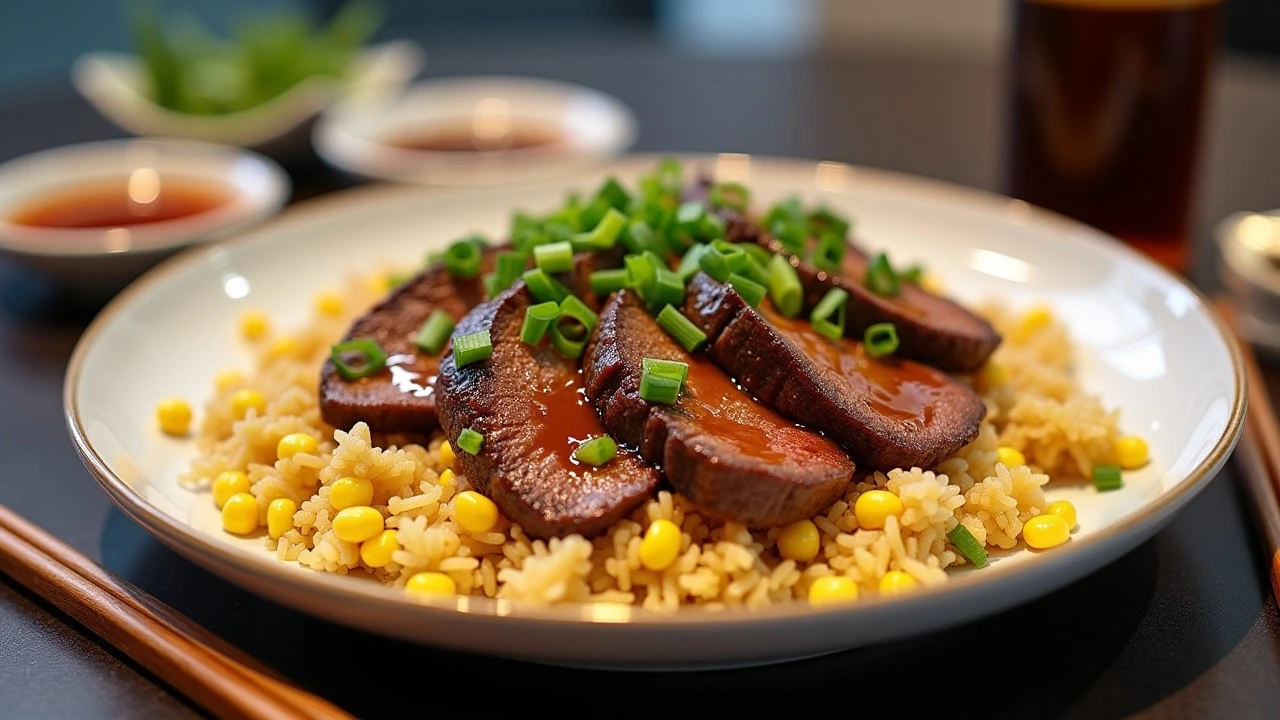
Variations for Your Pepper Lunch Recipe
One of the best things about the pepper lunch recipe is its adaptability. While the classic version uses beef, there are plenty of other protein options you can explore:
- Chicken Pepper Lunch Recipe: Thinly sliced chicken breast works wonderfully in this dish, especially when marinated in a bit of soy sauce and garlic.
- Shrimp Pepper Lunch Recipe: If you prefer seafood, substitute the beef with large shrimp. Cook the shrimp briefly, as they only need about 1-2 minutes per side.
- Vegetarian Pepper Lunch: Tofu or tempeh are great plant-based alternatives. Marinate them in the same soy sauce mixture as the beef, and cook until golden brown. Add extra vegetables like bell peppers, mushrooms, and zucchini for more flavor and texture.
You can also experiment by adding a fried egg on top. The rich, runny yolk pairs beautifully with the crispy rice and savory beef.
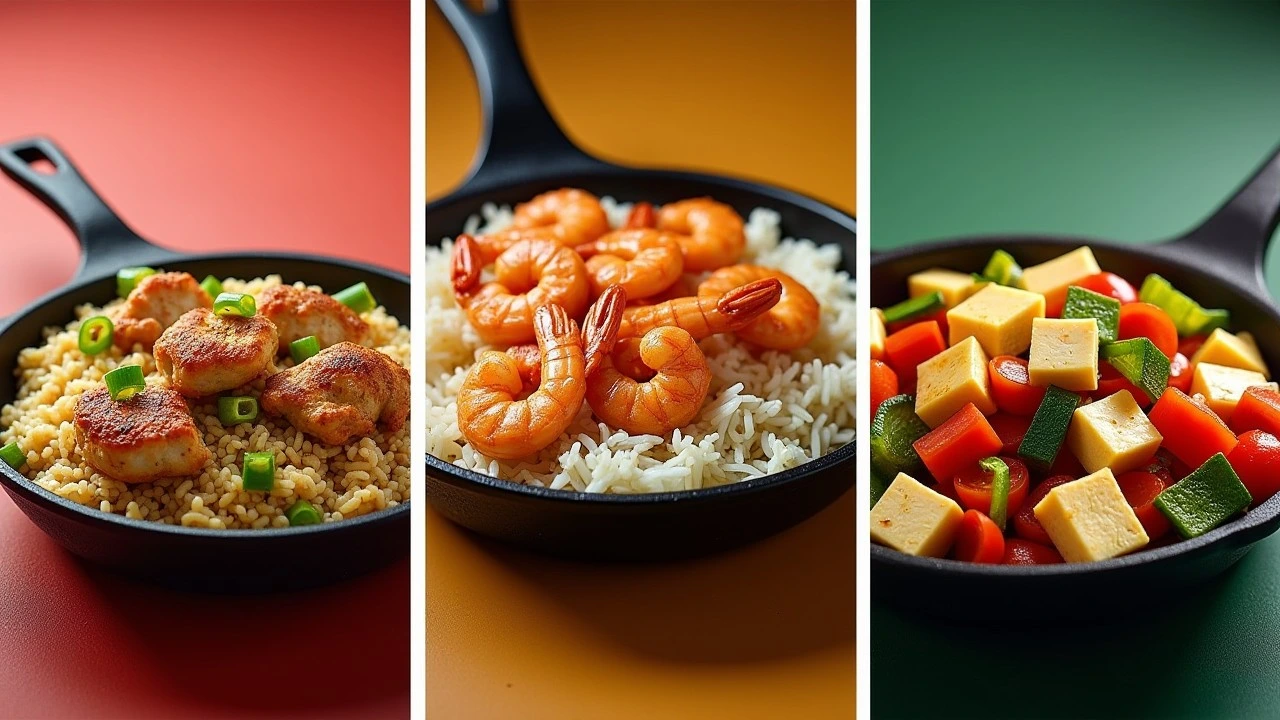
Tips for Perfecting the Pepper Lunch Recipe
- Get that crispy rice: Don’t rush the process. Let the rice sit in the skillet for a few minutes without stirring to develop a golden, crispy bottom layer.
- Thin beef slices are key: The thinner the beef slices, the quicker and more evenly they will cook. Thicker cuts may take longer and won’t have the same tender texture.
- Use a cast iron skillet: A cast-iron skillet retains heat better than other pans, ensuring the beef gets a nice sear and the rice crisps up perfectly. If you want to know more about cast iron, check out this guide(Exploratorium).
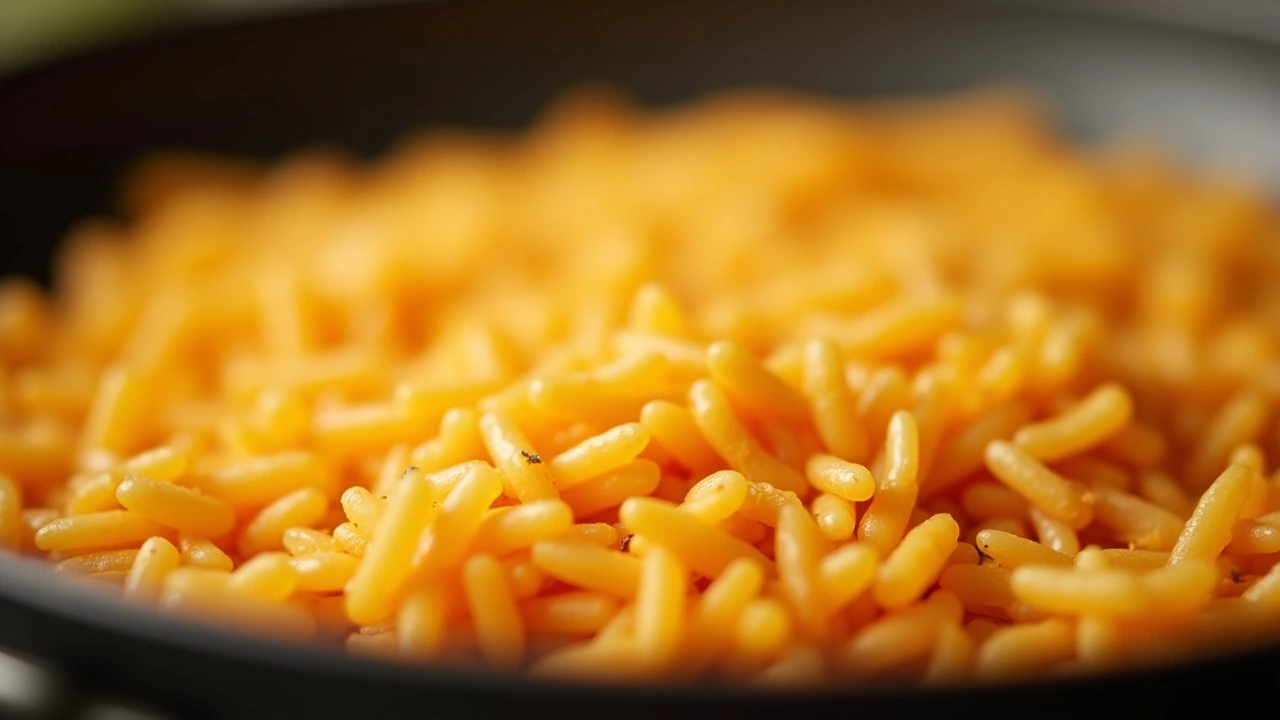
FAQs About the Pepper Lunch Recipe
What type of beef should I use?
Thinly sliced ribeye is ideal for a pepper lunch recipe due to its marbling and tenderness. However, sirloin and flank steak also work well if sliced thinly.
Can I make this recipe without a cast iron skillet?
Yes, although a cast iron skillet is ideal for retaining heat and achieving the crispy rice bottom that defines the pepper lunch recipe, you can use a heavy-bottomed stainless steel pan or nonstick pan if you don’t have one. Just ensure that the pan is heated to a high temperature before adding your ingredients. However, you may need to cook the rice a little longer to get the desired crispy texture. Additionally, remember that cast iron helps maintain the heat, which is a crucial factor in achieving the sizzling effect you want for this dish.
How can I adjust the spice level in the Pepper Lunch Recipe?
If you prefer a bit more heat in your pepper lunch recipe, consider adding some chili flakes or a dash of sriracha to the garlic soy sauce (karakuchi). For those who love a milder flavor, reduce the black pepper or swap it for white pepper, which has a more subtle taste. The honey soy sauce (amakuchi) can also be adjusted by adding a teaspoon of gochujang (Korean chili paste) for a sweet-spicy twist. Remember, the flexibility of this dish allows you to customize the heat level to your liking.
Can I freeze leftovers?
Absolutely! The pepper lunch recipe freezes well. Allow the cooked beef and rice to cool completely, then transfer them to an airtight container. It can be stored in the freezer for up to 3 months. To reheat, place the leftovers in a hot skillet, adding a small amount of oil or butter to refresh the crispy rice texture. Reheat until warmed through and enjoy. Alternatively, you can reheat the meal in the microwave, though the rice might not retain the same crispy texture.
For more ideas on how to store and reuse rice, check out this resource on cooking rice (Purdue University – Extension).
Variations and Customizations for Your Pepper Lunch Recipe
Making It Healthier
You can easily modify the pepper lunch recipe to suit a healthier diet. For example, swap out white rice for brown rice or cauliflower rice to increase fiber and reduce the carb content. You can also replace butter with olive oil or ghee, which are healthier fats. Lean proteins like chicken breast or shrimp are great alternatives to beef if you’re looking to reduce fat content. Additionally, load up on vegetables like bell peppers, carrots, and mushrooms for added nutrients and flavor.
If you’re looking for more health-conscious meal options, don’t forget to explore our gluten-free lunch recipes.
Vegetarian or Vegan Pepper Lunch Recipe
If you follow a vegetarian or vegan diet, the pepper lunch recipe can easily be adjusted. Swap out the beef for tofu or tempeh, both of which absorb the flavors of the sauces beautifully when marinated. Add a variety of vegetables, such as zucchini, bell peppers, or mushrooms, to bulk up the dish and provide different textures. Use vegan butter or olive oil to replace the dairy in the original recipe.
You can also substitute the sauces with tamari or a homemade soy-based alternative to avoid any animal-derived ingredients. The cooking method remains the same, and you still get that sizzling hot plate effect with all the flavors intact.
Serving Suggestions and Side Dishes
While the pepper lunch recipe is delicious on its own, you can complement it with a variety of side dishes to enhance your meal. Here are some excellent options:
- Edamame: Lightly salted steamed edamame is a perfect side dish that adds protein and texture to the meal.
- Miso Soup: A traditional Japanese soup made from fermented soybean paste, miso soup offers a salty, umami-rich flavor that pairs well with the savory elements of the Pepper Lunch.
- Pickled Vegetables: Japanese pickles (tsukemono) provide a tangy, refreshing contrast to the rich flavors of the beef and rice.
- Seaweed Salad: A simple seaweed salad with sesame oil and seeds can add a crisp and slightly nutty flavor to balance out the meal.
If you’re looking for a meat-free side option to pair with this dish, try our Mediterranean Spaghetti Sauce Recipe for a light, tangy contrast.
Conclusion
By following these 10 easy steps, you’ll be able to create an authentic pepper lunch recipe in your kitchen, complete with the crispy rice, sizzling beef, and rich sauces that make this dish so popular. Whether you stick to the classic beef version or try out the suggested variations, this recipe is bound to become a favorite. The beauty of this meal is its versatility—perfect for customizing to suit different tastes and dietary preferences.
Enjoy the sizzling experience with friends and family, and don’t forget to try out different combinations of sauces and sides to make this dish your own. For more gluten-free and vegetarian-friendly lunch ideas, visit our collection of gluten-free lunch recipes to keep your meal planning exciting and varied.
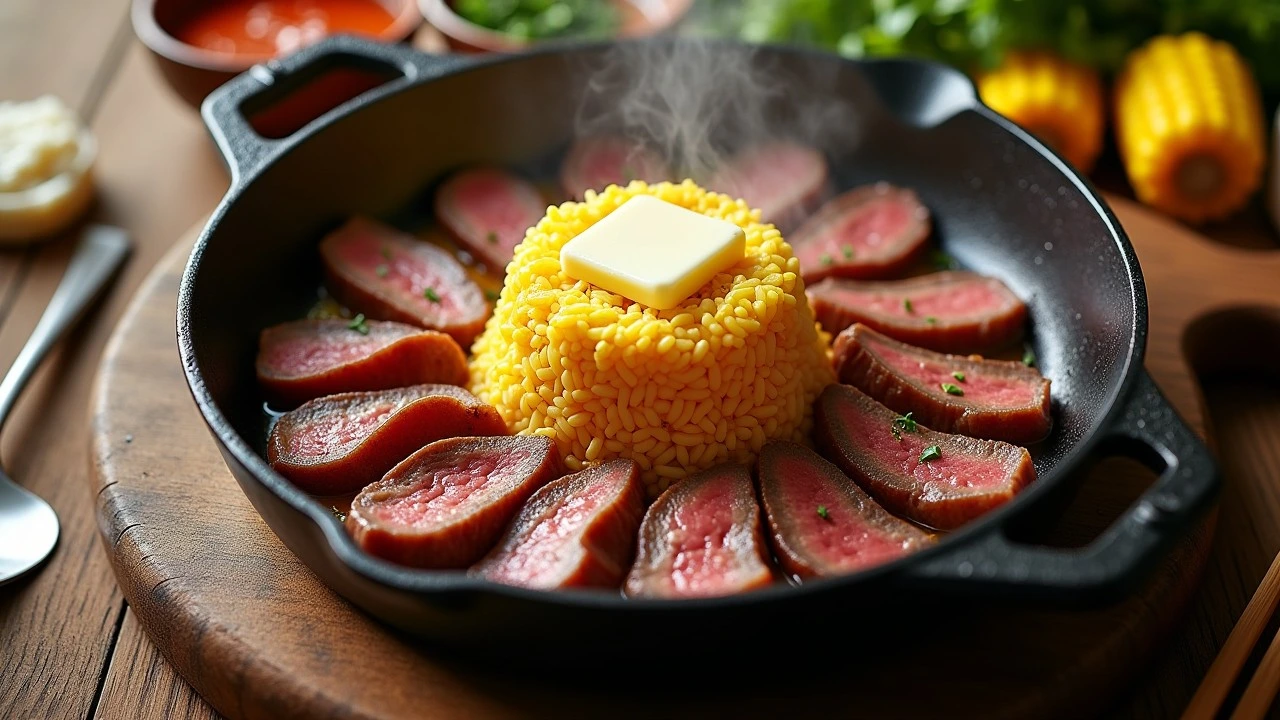
3 thoughts on “Pepper Lunch Recipe: 10 Steps to Sizzling Perfection at Home”